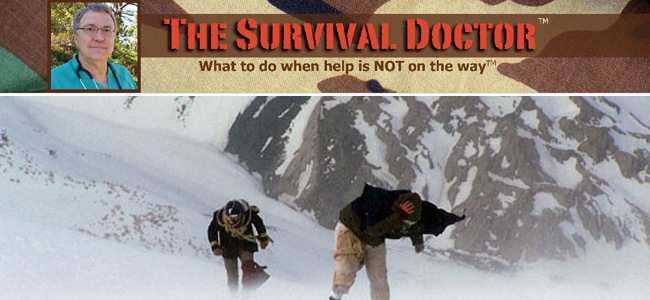
Frozen: 15 of the worst things to do if you're going in Hypothermia
In 2002, a couple of years after he won the Olympic gold medal in wrestling, Rulon Gardner went snowmobiling in Wyoming. “I told myself it would be a short trip,” he told the Associated Press. “We were going to go out about three hours and get home for dinner.” But he got lost and ended up stranded for 17 hours. The temperature reached as low as 25 below zero, according to the AP. By the time Gardner was found and flown to a hospital, he had extreme hypothermia and severely frostbitten feet. But he ended up losing only one toe.
What Most People Don’t Learn About Cold-Weather Survival
As I explained in this post, one reason Gardner’s frostbite didn’t have a worse outcome is once his feet got frozen, they stayed that way. He didn’t warm them, only to have them freeze again.
That’s a tip most people don’t know. He may not have either; he just said he had to choose between keeping his hands or his feet warm. Gardner’s father said his son’s “knowledge of the cold” helped pull him through. But even in wilderness-survival classes, there are important medical requirements for saving life and limb that aren’t covered.
To help bridge that gap, here are my top-15 things not to do when stranded in the cold. These tips could help you stay alive and have a better outcome once you’re rescued.
#3: Don’t rub your skin to warm up. It brings blood away from your core and to the surface. You feel warmer, but …
1. Don’t rewarm and refreeze. Don’t warm up a body part that has severe frostbite if you think it will just refreeze. Refreezing will kill the tissue for sure. (With severe frostbite, the skin is gray or white and hard.) From my post on this topic:
Just cover the area loosely to protect it. You should rewarm only if you expect transfer to a medical facility within two hours and you can keep the area warm enough that it won’t refreeze.
2. If possible (use common sense), don’t walk on a body part that has severe frostbite. That will damage the tissue further.
3. Don’t rub your skin to warm up. Rubbing the skin brings blood away from your core and to the surface. You feel warmer, but your vital organs are colder. Your body heat also escapes faster when it’s at the surface. And if your skin has frostbite, rubbing can damage it.
4. Don’t get wet. Hopefully that’s an obvious one. You’ll get cold quicker and at a higher temperature.
5. Don’t get dehydrated. In the cold, you may not notice thirst as much, but remember to drink. Staying hydrated helps your blood circulate and keep you warm. However …
6. Don’t drink alcohol. In general, stay away from alcohol because it can dehydrate, affect your judgment, and reduce your body’s ability to keep its core warm. But with every rule, it seems there’s an exception: there is this story of a man surviving on Coors.
7. Don’t forget to eat. Again, you have a lot of other things to worry about, but food gives your body fuel to use to keep itself warm. (If you do feel hungry, along with nauseous and fatigued, know that those are early symptoms of low body temperature.)
8. Don’t wander. There’s a reason for this beyond what you learn in wilderness-survival class. Yes, it’s good to stay in one place so people can find you, but also fatigue increases your risk for severe frostbite.
9. Don’t worry about frostbite more than hypothermia. With frostbite, you may lose a foot. With hypothermia, you may lose your life. Keeping your core warm is the first priority.
10. Don’t rely on your sense of cold. Moderate hypothermia brings confusion and exhaustion. Your body may stop shivering and even let you think you’re getting warmer. Some people with hypothermia take off their clothes. We’re not sure why, but it could be because they think they’re not cold.


